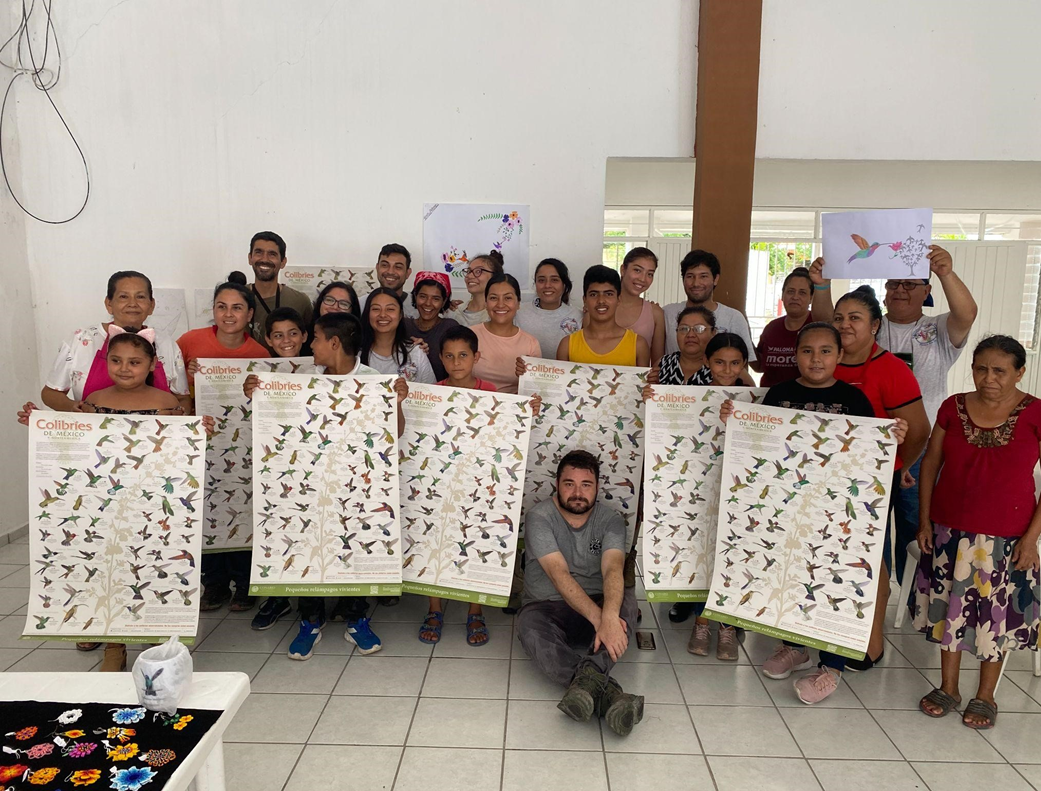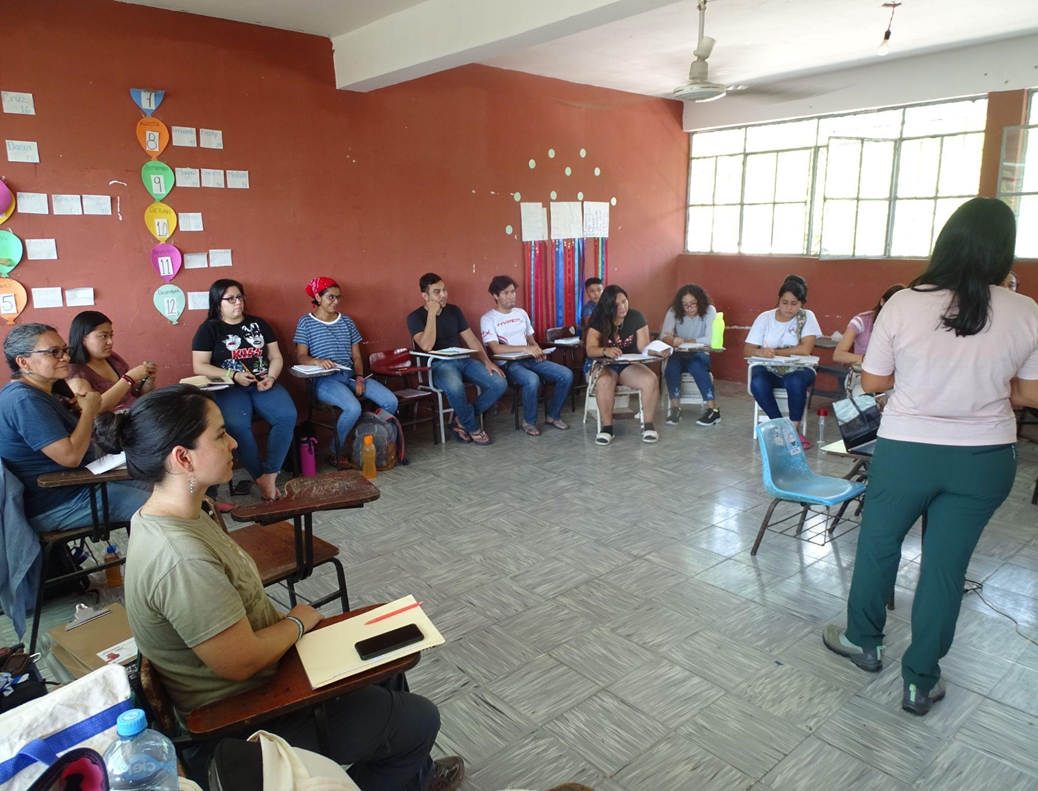The Hummingbird Conservation Networks (HCNs) has been actively engaged in conservation efforts in Nayarit, Mexico, with a particular focus on two communities, El Cuarenteño and La Bajada. These communities are now designated as Hummingbird Conservation Communities and Reserves (HCCRs) as part of HCN's innovative program, which blends community-based conservation concepts with scientific research, fostering public involvement in the conservation of these remarkable birds.
The spotlight of this conservation endeavor falls on the Mexican Woodnymph (Eupherusa ridgwayi), an endemic hummingbird species with a limited range in western Mexico. This species has been classified as "vulnerable" by the IUCN Red List of Threatened Species, included in CITES appendix II, and labeled as "threatened" under Mexican laws. However, there's a significant lack of knowledge about its ecological requirements, population trends, and the threats it faces.
The spotlight of this conservation endeavor falls on the Mexican Woodnymph (Eupherusa ridgwayi), an endemic hummingbird species with a limited range in western Mexico. This species has been classified as "vulnerable" by the IUCN Red List of Threatened Species, included in CITES appendix II, and labeled as "threatened" under Mexican laws. However, there's a significant lack of knowledge about its ecological requirements, population trends, and the threats it faces.
Catching up with the work done at El Cuarenteño, and CECAM Conference (photos Sergio Díaz-Infante
To bridge this gap, HCN embarked on a comprehensive survey of the Mexican Woodnymph's habitat and resource utilization through extensive fieldwork. This survey aims to provide detailed insights into their foraging patterns, habitat preferences, reproductive biology, and interactions with the local ecosystem. Collaborating with local researchers, community members, and stakeholders, HCN is dedicated to ensuring the survival, reproduction, and thriving of the Mexican Woodnymph.
The partnership with Dr. Elsa Figueroa from the University of Nayarit, Carlos Villar, a dedicated local volunteer, and Mark Stackhouse, a knowledgeable local birding guide, has been instrumental in this conservation initiative. Training workshops were conducted, involving University of Nayarit biology students and community members, to facilitate hummingbird monitoring in the area. Simultaneously, the Magic Wings Festival engaged the community in this vital conservation effort.
The partnership with Dr. Elsa Figueroa from the University of Nayarit, Carlos Villar, a dedicated local volunteer, and Mark Stackhouse, a knowledgeable local birding guide, has been instrumental in this conservation initiative. Training workshops were conducted, involving University of Nayarit biology students and community members, to facilitate hummingbird monitoring in the area. Simultaneously, the Magic Wings Festival engaged the community in this vital conservation effort.
|
Dr. Elsa Figueroa
Elsa was born in Mexico City. She studied Biology and earned her Master's Degree in Biological Sciences at the Faculty of Sciences, and her PhD at the Institute of Ecology at UNAM. Since 2013, she has worked at the Autonomous University of Nayarit as a researcher and professor in Biology, where she has directed, among other projects, research on hummingbirds in Sierra de Vallejo, Nayarit. Currently, she is also involved in the creation of pollinator gardens. Since 2021, she has been collaborating with the Hummingbird Conservation Networks, specifically in the study and conservation project of the Mexican Woodnymph in Nayarit, Mexico, an endemic and endangered hummingbird species. She coordinates the monthly monitoring tasks carried out in the communities of La Bajada and El Cuarenteño, and soon in the Sierra de San Juan. Thanks to her support, three biology students have completed their theses, contributing to knowledge about the hummingbird community in the area. HCNs recognize the invaluable work of Dr. Elsa Figueroa in studying and conserving the hummingbird species of Nayarit, Mexico. |
Over the course of a year, HCN diligently monitored the Mexican Woodnymph's habitat and resource utilization, with a comprehensive report in progress. Additionally, three undergraduate biology theses are currently in progress, adding to the body of knowledge about the hummingbird community in the region. Community engagement has been a focal point, with informative meetings held to update the residents of El Cuarenteño on the ongoing work and future plans. Results and progress were also shared at the Conference for the Study and Conservation of the Birds of Mexico (CECAM) in San Luis Potosi.
Building on the success in El Cuarenteño, HCN is committed to further expanding its monitoring efforts and implementing projects to enhance local economic opportunities, such as crafts workshops. The organization remains dedicated to its partnership with key stakeholders and the communities involved in this crucial conservation work, with ongoing plans for the Nayarit HCCR.
As they continue to make strides in hummingbird conservation, HCN welcomes support from those interested in contributing to this vital project, benefiting not only the Mexican Woodnymph but also the communities and ecosystems in which they thrive.
Building on the success in El Cuarenteño, HCN is committed to further expanding its monitoring efforts and implementing projects to enhance local economic opportunities, such as crafts workshops. The organization remains dedicated to its partnership with key stakeholders and the communities involved in this crucial conservation work, with ongoing plans for the Nayarit HCCR.
As they continue to make strides in hummingbird conservation, HCN welcomes support from those interested in contributing to this vital project, benefiting not only the Mexican Woodnymph but also the communities and ecosystems in which they thrive.
Field Workshop and Magic Wings Festival at La Bajada (Photos Sergio Díaz-Infante











